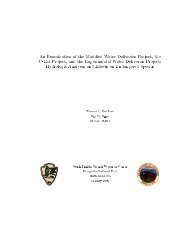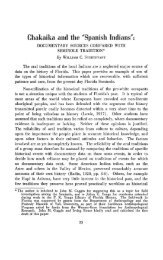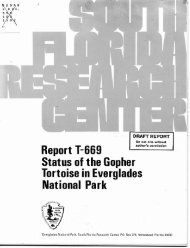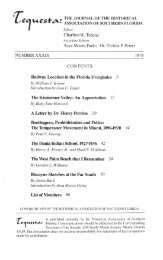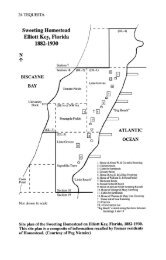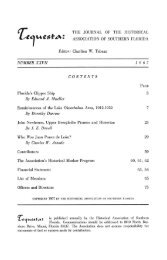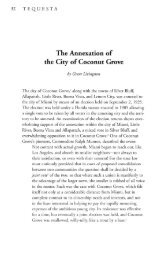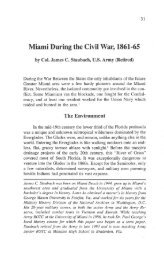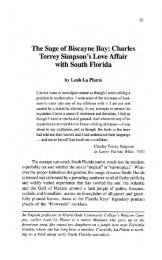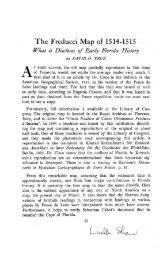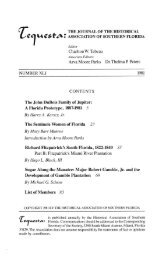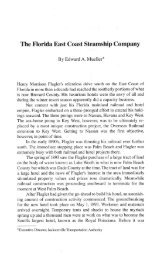Tequesta : Number - 50/1990 - FIU Digital Collections
Tequesta : Number - 50/1990 - FIU Digital Collections
Tequesta : Number - 50/1990 - FIU Digital Collections
Create successful ePaper yourself
Turn your PDF publications into a flip-book with our unique Google optimized e-Paper software.
36 TEQUESTA<br />
to distribute to Fairchild Garden members. I obtained one of the plants,<br />
but mine never got beyond a pot where its characteristic bonsai form<br />
discouraged us from parting with it for some outdoors location.<br />
In the mid-19<strong>50</strong>s while Leonard Brass, an Australian botanist and<br />
explorer, was collecting in New Guinea for Archbold Expeditions, he<br />
sent to the Fairchild Garden seeds of several palms new to botany. I was<br />
acting director of the Garden at the time, and I remember well how those<br />
seeds arrived - in packages of moist sphagnum moss, many of them<br />
having sprouted during the long journey. So clean were the seeds that<br />
federal plant quarantine passed them without fumigation. We lumped<br />
all the plants we grew from these seeds as "Brass palms," which<br />
otherwise were identified only by numbers - the FTG's accession<br />
numbers as well as by the Archbold Expedition's collecting numbers.<br />
Brass, of course, had collected and sent botanical specimens to other<br />
institutions, including Cornell University, with expedition numbers.<br />
The FTG did not at that time have a herbarium. According to the<br />
botanist's notes, most of the seeds had been collected in wet tropical<br />
forests. We rigged up sprinklers in the branches of a colony of live oaks,<br />
and, to further simulate wet tropical forest conditions, we covered the<br />
ground beneath the sprinklers with a thin blanket of leaf mold and wood<br />
chips. Here we planted half of the Brass palms, watering them from the<br />
overhead sprinklers. The remaining palms were planted in dissimilar<br />
situations. It so happened that all thrived, but those in our wet forest did<br />
best. As a result, we wound up with a "rain forest," a feature that is still<br />
one of the Garden's finest displays.<br />
In time, botanists got around to classifying and naming the Brass<br />
palms, among which was found a new genus that, appropriately, was<br />
named after the collector - Brassiophoenix. All of these New Guinea<br />
palms eventually fruited, and their offspring have been distributed<br />
among Fairchild Garden members. A Brassiophoenix drymophoeides<br />
grew just outside a window of my study, while another Brass palm, a<br />
then-unnamed Ptychosperma species, was planted near the north border<br />
of our property. Whenever I looked out a window to rest my eyes<br />
and relax my mind, my gaze often fell upon one or the other of these<br />
palms and I recalled the quiet, intelligent botanist. Brass, who worked<br />
at the Archbold Expeditions headquarters near Lake Placid, Florida,<br />
when not on collecting trips, became ill. He returned to Australia to be<br />
buried beside his deceased wife. The several fine "brass palms" he sent<br />
from New Guinea still thrive in South Florida gardens.



